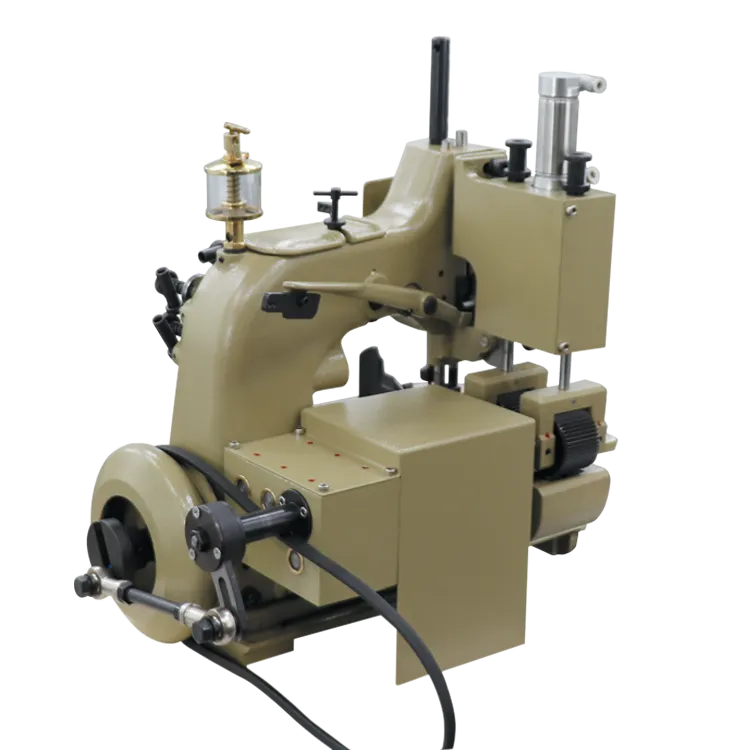sewing leather bags by machine
Sewing Leather Bags by Machine A Comprehensive Guide
Sewing leather bags by machine is an art that combines craftsmanship with the efficiency of modern technology. Whether you are a seasoned artisan or a novice looking to venture into leatherworking, understanding the process and techniques of machine sewing leather bags can elevate your creations to a professional level.
Choosing the Right Materials
Before diving into sewing, it’s crucial to select the right materials. Leather comes in various types, each with unique properties. Full-grain leather is known for its durability, while top-grain leather is slightly more refined. For beginners, using vegetable-tanned leather can be ideal, as it’s easier to manipulate and sew. Additionally, you will need strong thread, often polyester or nylon, which can withstand the weight and structure of leather bags.
Tools and Equipment
Investing in the right tools will significantly impact your sewing experience. A heavy-duty sewing machine with a walking foot is recommended, as it helps feed the leather through the machine without slipping. You will also need a variety of needles; a leather needle with a wedge-shaped point is essential for penetrating the material effectively. Other useful tools include rotary cutters for clean edges, cutting mats to protect your workspace, and specialized clips instead of pins, which can leave holes in leather.
Preparing Your Design
Before you begin sewing, create a detailed plan for your leather bag. Start with sketches that outline the size, shape, and features of your bag. Patterns can be made from paper or cardstock, allowing you to visualize how the bag will come together. Once the design is finalized, transfer the pattern pieces onto the leather using a fabric marker or chalk. Remember to include seam allowances, typically around 0.5 inches.
sewing leather bags by machine

Sewing Techniques
Sewing leather requires specific techniques to achieve a polished finish. Firstly, ensure the machine settings are appropriate for leather; adjust the stitch length to around 3.5 to 4 mm for a balanced appearance. As you sew, guide the leather through the machine steadily, avoiding any force that might cause the material to bend or crease. It’s beneficial to practice on scraps of leather before committing to your project.
Joining multiple pieces of leather may require edge finishing or beveling to create a smooth, professional look. Using an edge tool helps to refine the edges, while applying a leather conditioner can help keep them supple and prevent fraying.
Finishing Touches
Once the main body of the bag is sewn together, it’s time for the finishing touches. Add hardware such as zippers, buckles, or rivets to enhance functionality and style. Make sure to secure them firmly, as leather bags often carry heavier loads. Finally, consider applying a protective finish to your leather bag, which not only preserves its appearance but also adds a layer of water resistance.
Conclusion
Sewing leather bags by machine is a rewarding process that combines creativity and technical skill. With the right materials, tools, and techniques, you can create beautiful, durable bags that reflect your personal style. Whether for personal use or as a product to sell, mastering the art of sewing leather bags opens up a world of possibilities in the realm of fashion and accessory design. Dive into this craft, and you may find yourself not only improving your sewing skills but also indulging in a passionate and satisfying hobby.
-
Boost Production Efficiency with a Pattern Sewing MachineNewsAug.29,2025
-
Industrial Excellence with the Best Heavy Duty Sewing MachineNewsAug.29,2025
-
Precision and Power with the Best Pattern Sewing MachineNewsAug.29,2025
-
Reliable Bulk Packaging Starts With the Right FIBC Sewing MachineNewsAug.29,2025
-
Advanced Packaging Solutions: Elevate Productivity with Jumbo Bag Sewing Machine and Industrial Stitching EquipmentNewsAug.29,2025
-
High-Performance Solutions for Bulk Packaging: FIBC Sewing Machine and MoreNewsAug.29,2025
-
Maximize Efficiency with an Industrial Cylinder Arm Sewing MachineNewsAug.28,2025


























